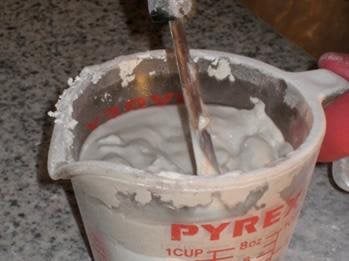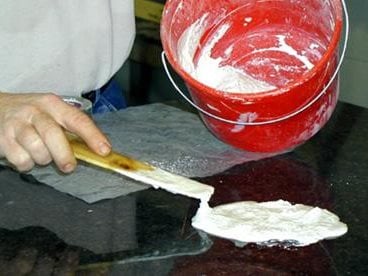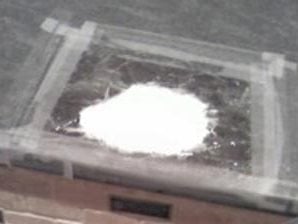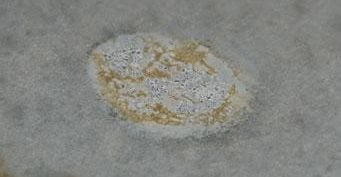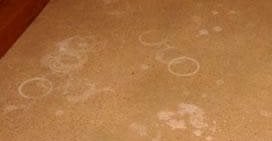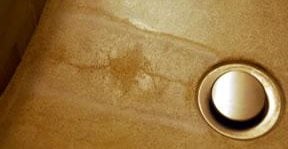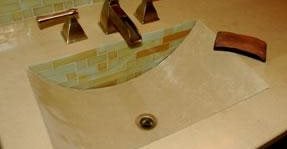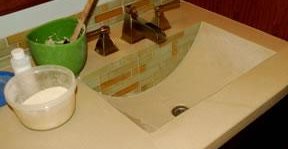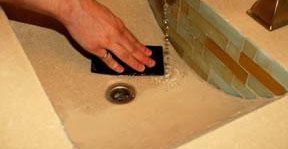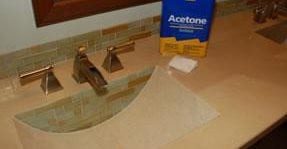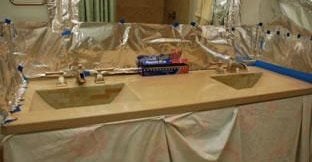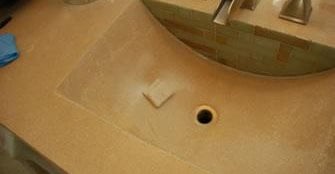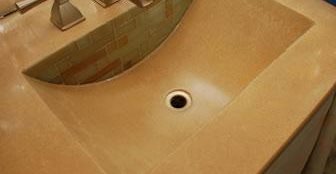- Countertop Supplies Home
- Concrete Countertop Molds
- Concrete Countertop Mix
- Pigments & Custom Options: Color additives, special effects & decorative add-ins
- Countertop Reinforcement
- Casting Equipment: Tables, mixers, vibrators & curing covers
- Countertop Finishing & Installation
- How to Polish Concrete Countertops
- Sealers for Concrete Countertops
- Delivery and Installation
- Related Reading
- Problems with Concrete Countertops
- Countertop Product Reviews
- Concrete Countertop Basics: Pricing, colors, edge details, and more
How to Remove Stains from Concrete Countertops
Tips for getting stains out of concrete countertops and dealing with discolorationWhether caused by coffee, oil, or lemon juice, these expert Q&As will help you get stains out of concrete countertops. Keep in mind that many stains can be prevented with a good concrete countertop sealer.
HOW TO REMOVE STUBBORN STAINS AND DISCOLORATION
Question:
How do I go about removing stains from my countertops? Is this something I can do myself? Do I treat oil spots the same as coffee stains?
Need help with stains?
Find concrete countertop contractors near me
Answer:
The first step to removing a stain is determining whether it's truly a stain, or instead the etching of the surface from a strong food acid, such as lemon juice. Stains are usually discoloration, such as from coffee, mustard, or red wine, and are treated very differently from etching.
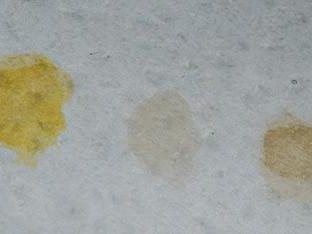 Mustard, coffee, and red wine stains (left to right).
Mustard, coffee, and red wine stains (left to right).
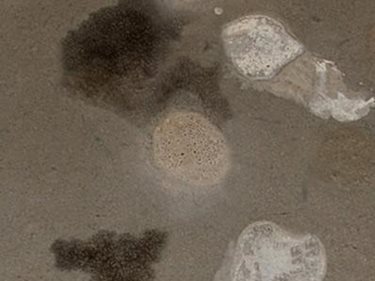 Oil (dark spots) and acid etching (lighter areas).
Oil (dark spots) and acid etching (lighter areas).
Stain removal is something most homeowners can do themselves with the right materials and methods. For stains like grape juice and mustard, household bleach applied to a cotton ball or a folded paper towel is often adequate to remove the discoloration. Soak the cotton ball or paper towel with bleach, place it on the stain, and set a heavy glass or cup on top. Usually the stain is gone in 5 to 10 minutes. Generally most countertop finishes are not affected by short-term exposure to bleach, but it's best to verify this in advance before leaving bleach on your countertop for a prolonged period of time.
Oil stains darken the concrete where the oil has soaked into the surface and may require more aggressive removal methods, such as the use of a poultice. A poultice is a mixture of an absorbent powder and a liquid solvent. The solvent soaks into the concrete and breaks up the stain, while the powder draws the stain out of the concrete. The natural stone industry has been using poultices for a long time, and many commercial poultices are available. However, you can also make an effective poultice using simple materials available at grocery and hardware stores.
HOW TO REMOVE OIL STAINS FROM CONCRETE COUNTERTOPS
Question:How do you remove dark oil stains in a concrete countertop that seem to have soaked into the surface? I've tried several types of cleaners, and nothing seems to work.
Answer:Oil stains can be especially difficult to remove because unlike most stains, which stay near the concrete's surface (or are only in the sealer itself), oil penetrates deeply into the concrete. Generally, removal requires the use of a strong poultice. Different people have different recipes and techniques for applying poultices, but they all have the same basic characteristics.
A good poultice for the removal of oil stains is a mixture of baking soda, powdered sugar, or flour with acetone, making a peanut-butter-like paste. The poultice is spread on the oil spot to a thickness of about ¼ inch, then covered with plastic wrap that's taped down to seal in the poultice.
Generally this mixture is left on for 24 hours to give the acetone enough time to work on the oil and make it easier for the absorbent material to draw the oil out of the concrete. After 24 hours have passed, the plastic is removed and the poultice is allowed to dry. This is when the oil is drawn out of the concrete, so patience here pays off. Stubborn oil stains can take multiple applications of poultice to completely remove.
Keep in mind that most sealers are vulnerable to acetone, so it's vital for you to verify before applying the poultice that it will not damage the sealer and remove the protective finish.
FIXING SPOTS CAUSED BY ACID ETCHING
Question:One of my customers has white spots in their concrete countertops after cutting lemons and limes on the surface. They've had no success removing the stains and want my help. What's the best method for removing acid stains?
Answer:White spots from lemon juice and other acids are actually not stains at all. Instead, they are etching where the acid dissolved the cement paste and left white carbonate deposits.
Unlike stains, etching is physical damage to the surface. An acid (either citric acid from fruit or acetic acid from vinegar-based foods) reacts with the cement paste and any calcium-based aggregate, gradually dissolving the materials and leaving a rough depression and a light-colored appearance. Repairing an etched area often involves honing or polishing out the white spot, grouting to fill exposed pinholes, and resealing to restore the finish. As you can imagine, this is a lengthy process that takes skill, practice, and the proper tools to do well and is not something a homeowner should tackle.
For very light etching, often a fine-grit diamond hand pad is adequate. Start with an 800-grit pad and see if it's effective. If you seem to be doing a lot of rubbing with little result, then switch to a slightly coarser 400-grit pad. The goal is to remove the visual damage without substantially altering the concrete.
Larger etched areas might need to be honed or polished using an electric polisher. Since repairs are likely going to be done in a home, dry-polishing pads are more practical than wet-polishing diamond pads. Since dry polishing can generate harmful dust, prewetting the concrete with a tile sponge can virtually eliminate dust, leaving behind only a thick paste. Once the etch marks are removed, you can reseal the surface.
Deeply etched areas often need to be regrouted to replace the cement paste that was dissolved by the acid. This will restore the appearance and surface texture to like-new conditions. Once the grout is hard, you can hone it off with fine-grit diamond pads (usually 200 or 400 grit) and then reseal the newly restored concrete.
The following photos show the sequence of how I restored a pair of etched concrete sinks. The reactive sealer had completely worn away after a year of use, leaving the bare concrete vulnerable to mild etching.
The first step was to hone off the remaining sealer and prepare the concrete for regrouting. Usually grout used for concrete countertops is made with portland cement. However, that can take a day or longer to harden. Since this was a repair, time was of the essence. I used CSA (calcium sulfo-aluminate) cement instead of portland cement, so I only had to wait about an hour before the grout could be honed off. (Ordinary grout usually takes 16 to 24 hours to get hard enough.) With the CSA-based grout, I am able to do two or three applications in a single day, if necessary, to get the concrete surface as smooth and even as possible.
I chose to seal the sinks with a different sealer. To return the sinks to use as fast as possible, I used a urethane sealer that cures upon exposure to ultraviolet light. Because this type of sealer needs the concrete to be very dry to ensure good bonding, I let the bare concrete dry overnight. Then I wiped it down with acetone, which removed any residue and helped to draw moisture out of the concrete. Because the UV light is very powerful and could have discolored the homeowner's hardwood cabinetry, I thoroughly masked everything with old sheets and aluminum foil.
I also took care in applying the sealer, because I didn't want to get it on the top of the countertop or the on the glass tile backsplash. So I chose to wipe it on rather than on applying it by brush or roller. Wiping leaves a very thin film of finish, so I had to cure each coat, lightly sand the surface, and then clean the dust off with acetone.
It took two days to do the full repair. The first day involved a few hours of honing and grouting. On the second day, it took me about an hour to seal both sinks with four coats of finish. As soon as the last coat cured, I was able to turn the water on and use the sink.
So far these finish coats have withstood the test of time. After a year and a half, there is no water penetration and no signs of etching or delamination.
Return to Problems with Concrete Countertop
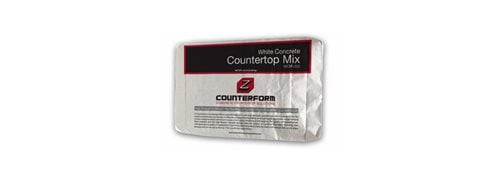 White Countertop Mix
Pre-blended, all in one, high strength castable concrete mix.
White Countertop Mix
Pre-blended, all in one, high strength castable concrete mix.
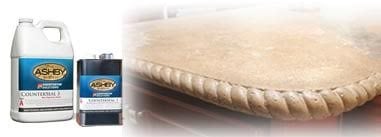 Topcoat Sealer
Produces a scratch and stain resistant top coating.
Topcoat Sealer
Produces a scratch and stain resistant top coating.
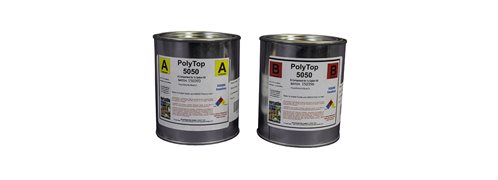 PolyTop Sealer
Designed for speed and heat resistance.
PolyTop Sealer
Designed for speed and heat resistance.
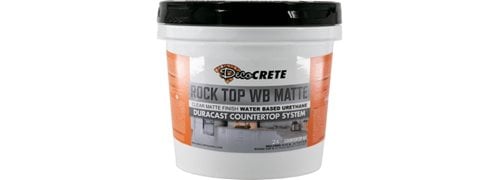 Rock Top Sealer
Clear matte finish, water-based urethane
Rock Top Sealer
Clear matte finish, water-based urethane
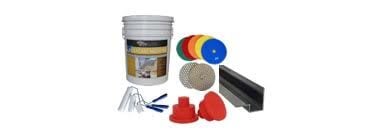 Countertop Products
All the supplies needed for great countertops.
Countertop Products
All the supplies needed for great countertops.
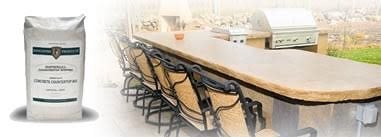 Imperial Countertop Mix
Engineered to be lightweight and strong. Minimal shrinkage.
Imperial Countertop Mix
Engineered to be lightweight and strong. Minimal shrinkage.
